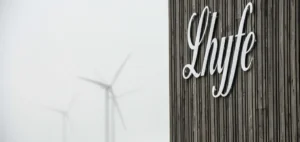Investments in hydrogen projects are accelerating sharply, but remain confronted with several uncertainties, according to the Global Hydrogen Review 2024 report by the International Energy Agency (IEA). Over the past 12 months, the number of Final Investment Decisions (FID) for hydrogen projects has doubled, mainly led by China, which represents over 40% of these commitments. The total capacity of electrolyzers that have reached FID is currently 20 gigawatts (GW), a volume that could quintuple the global production of low-emission hydrogen by 2030.
Total hydrogen production reached approximately 97 million tonnes (Mt) in 2023, of which less than 1% is classified as low-emission. This proportion could rise to 49 Mt per year by 2030 if all currently announced projects are realized. Electrolyzer installations have reached a capacity of 1.4 GW by the end of 2023 and are expected to exceed 5 GW by the end of 2024. However, most announced projects do not exceed the planning stage due to the lack of clear demand signals and slow regulatory incentives.
Investments and Financial Challenges
Global investments in hydrogen supply projects totaled approximately USD 3.5 billion in 2023, with 80% of this spending allocated to building electrolyzer capacities and the remainder to projects coupled with Carbon Capture, Utilization, and Storage (CCUS). China absorbed about half of these investments, while Europe represented a third. Conversely, investments in infrastructure such as pipelines, storage, and refueling stations remain low. If all Chinese projects currently under development reach their construction stage, expenditures could increase by 140% in 2024.
Gap Between Production and Demand
Governments worldwide have set production targets of 43 Mt per year of low-emission hydrogen by 2030, but demand targets only total 11 Mt, representing only 25% of production ambitions. This gap is a significant risk, as without corresponding demand, many projects may not materialize. Uncertainty around regulatory frameworks and a lack of alignment between regions also threaten to fragment the global hydrogen market.
Support Policies and Regulatory Alignment
The report highlights the need to strengthen demand support policies, such as Carbon Contracts for Difference (CCfD) in Germany, as well as the European Union (EU) mandates for aviation and maritime transport. However, these initiatives, while encouraging, remain insufficient to ensure sustainable growth in hydrogen. Moreover, regulations on greenhouse gas (GHG) emissions associated with hydrogen production, which are crucial for building investor confidence, remain incomplete and lack harmonization between regions. In this regard, the mutual recognition of certification schemes, agreed upon by 37 governments during COP28, could reduce the risk of fragmentation.
Production Costs and Prospects
The cost of producing low-carbon hydrogen is currently higher than that of hydrogen produced from fossil sources. Electrolysis costs have recently increased due to supply chain pressures. Nevertheless, the report projects that these costs could drop to USD 2-9/kg by 2030, down from USD 4-12/kg today, thanks to technological advancements and economies of scale. In a scenario where current policies do not change (Stated Policies Scenario), this cost reduction would only be 30%, maintaining a significant gap with fossil fuel-based production costs.
Regional Opportunities and New Markets
The IEA report also highlights the potential of Latin America to become a key player in low-carbon hydrogen production. Initiatives such as the launch of the regional certification framework CertHiLAC aim to structure the regional hydrogen market and attract international investors. In China, the pipeline of electrolysis projects is by far the most advanced, with an annual production capacity of over 25 GW, representing approximately 60% of the world’s electrolyzer manufacturing capacity.
Short and Long-Term Outlook
Hydrogen support policies continue to develop, but they remain insufficient compared to global targets. Without increased demand, projects risk remaining in the concept stage. The key lies in accelerating demand through robust incentives and clear regulatory frameworks to encourage hydrogen use in hard-to-decarbonize sectors such as heavy industry, chemicals, and refining.






















